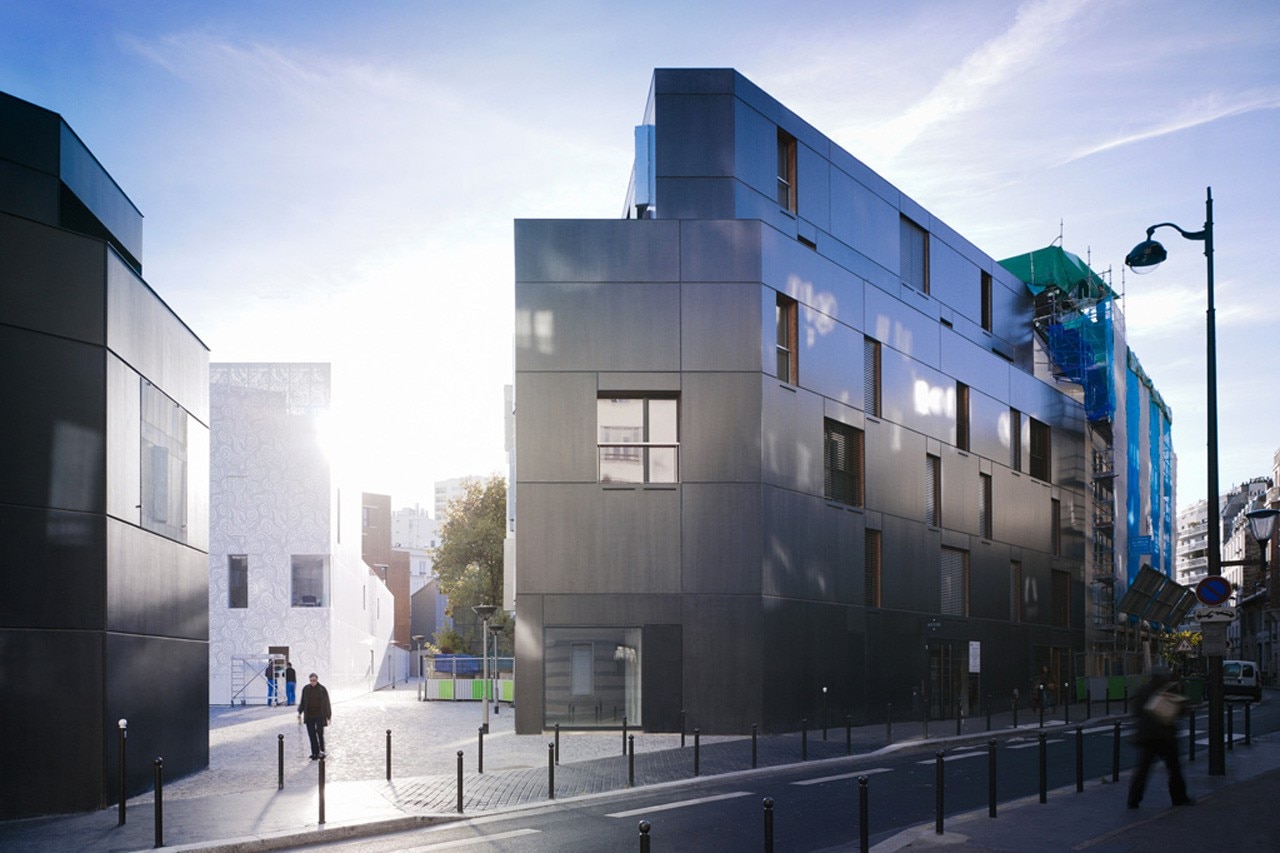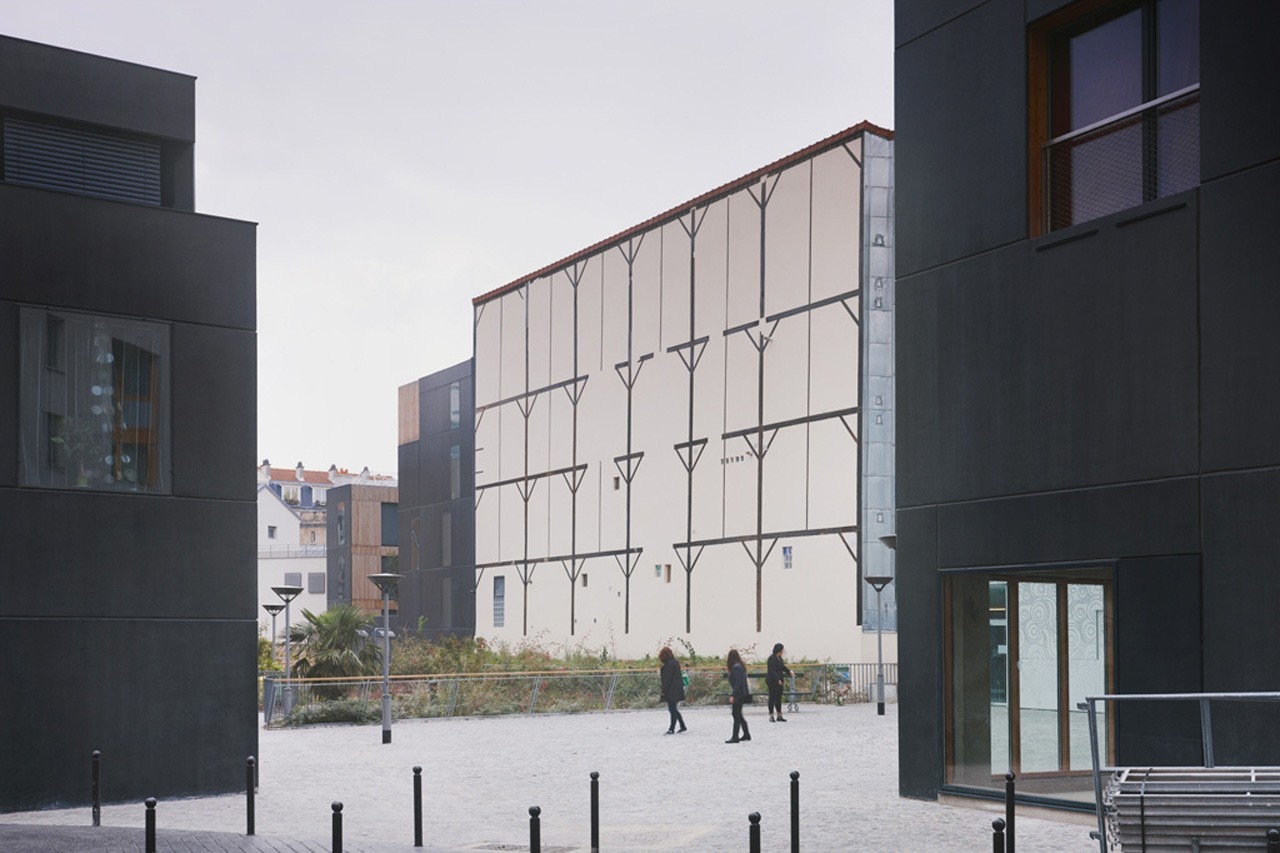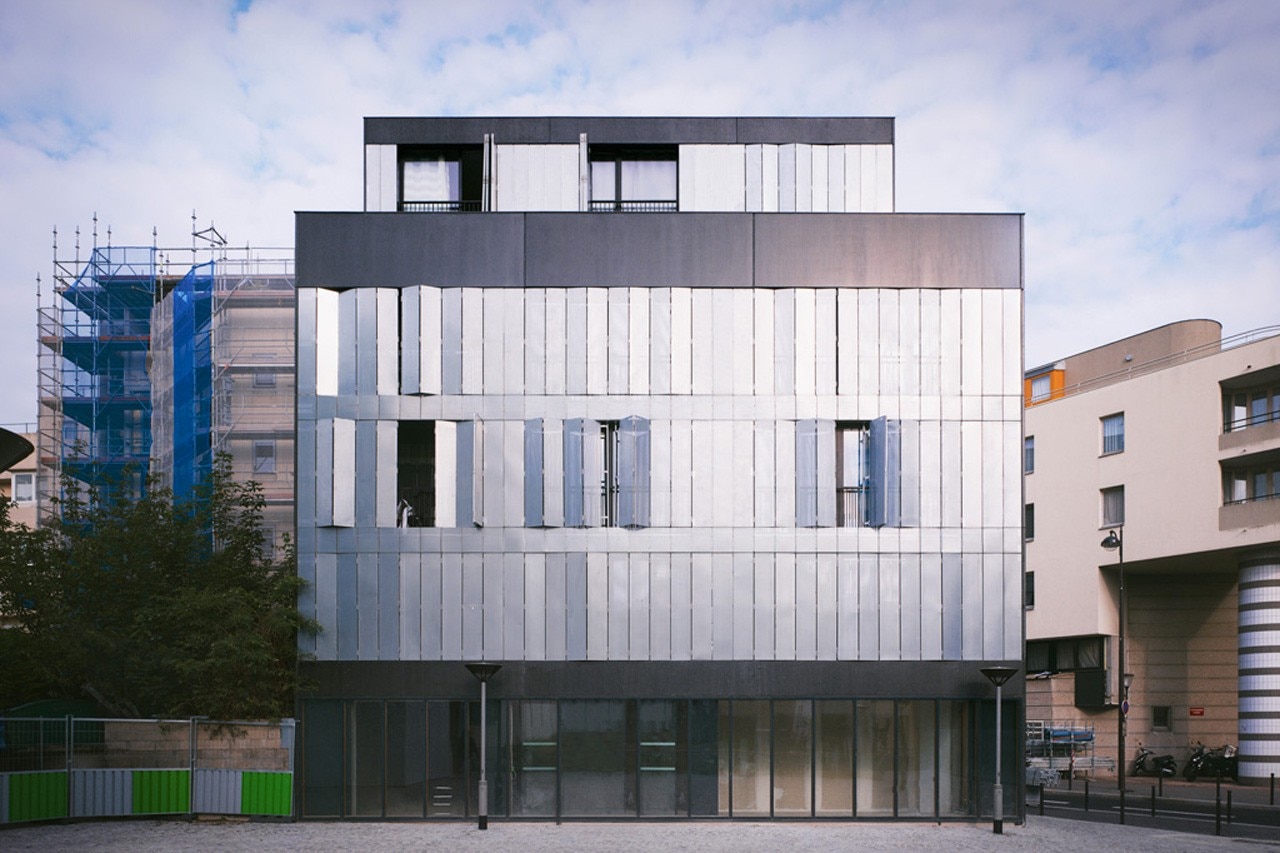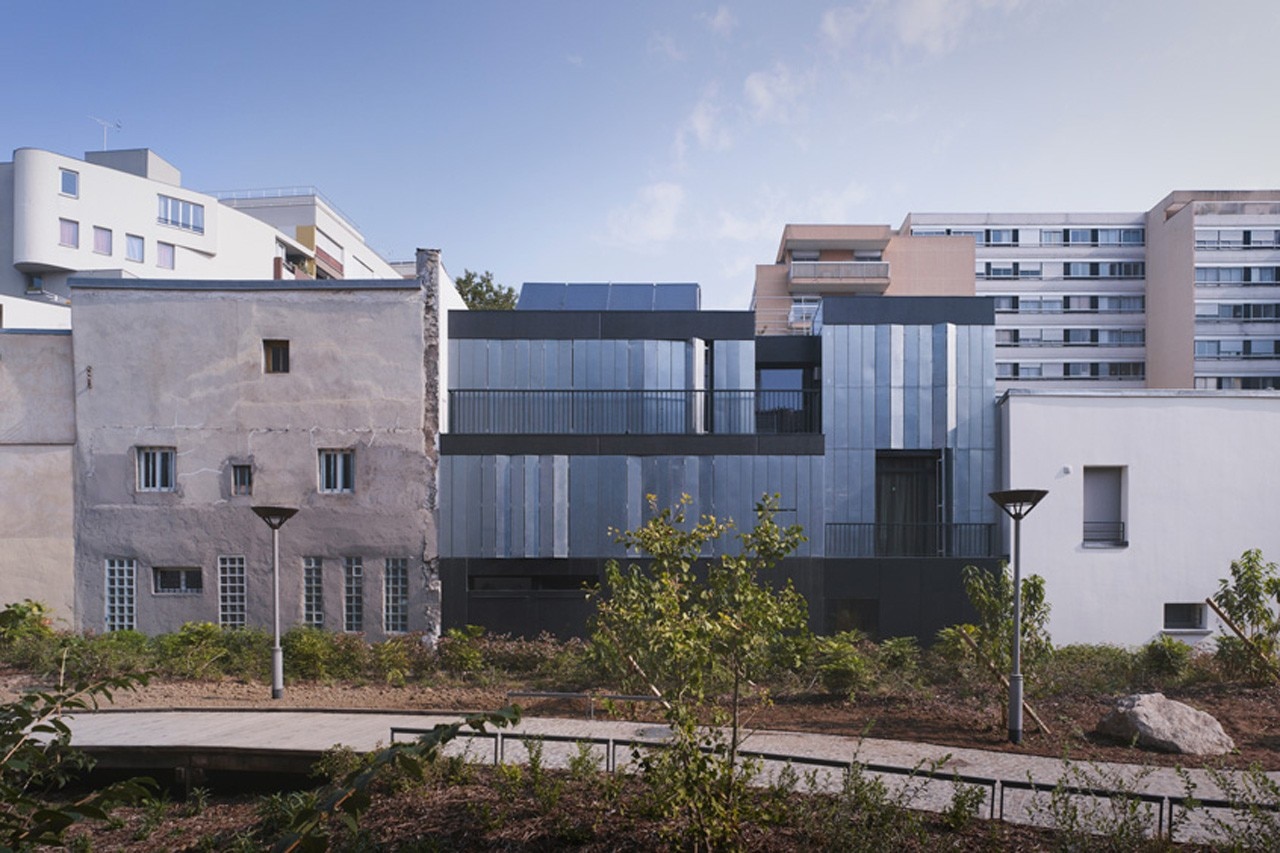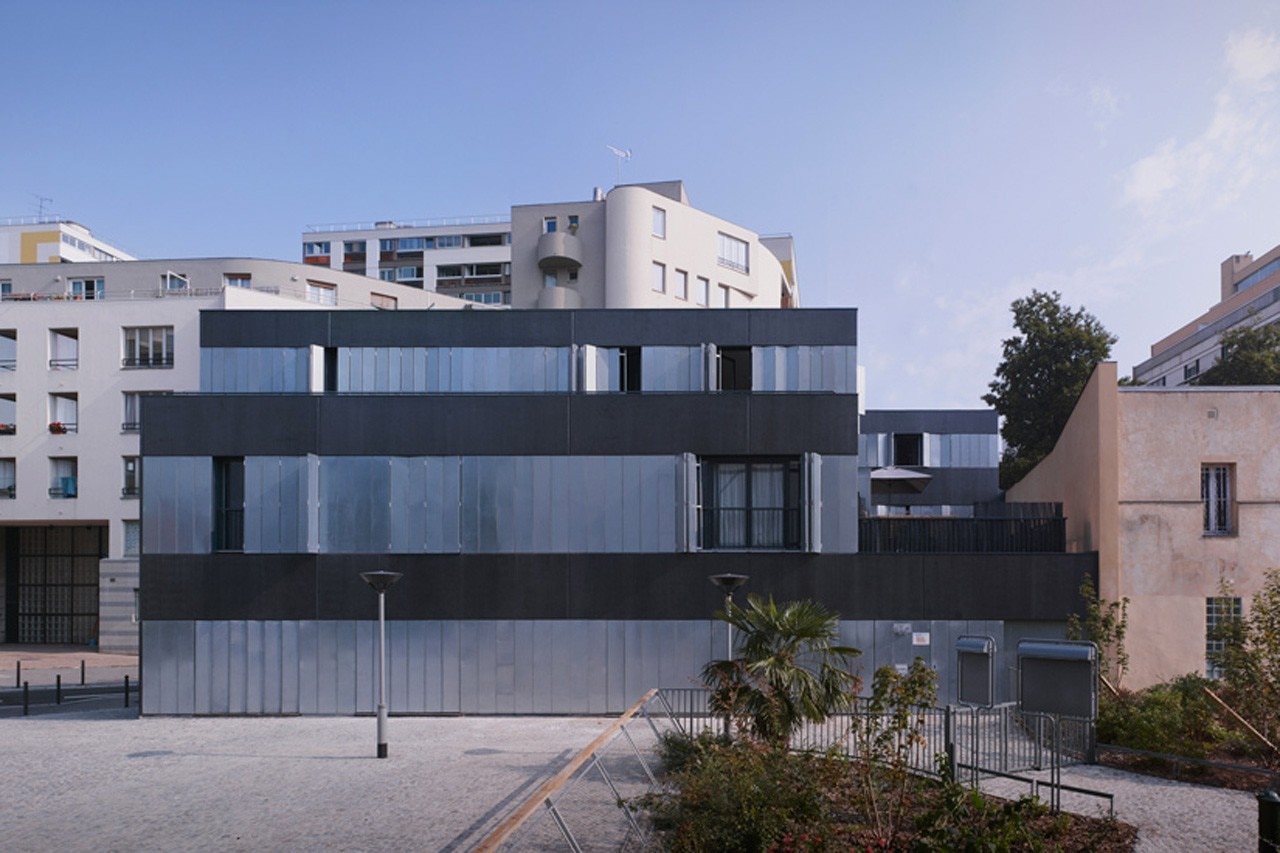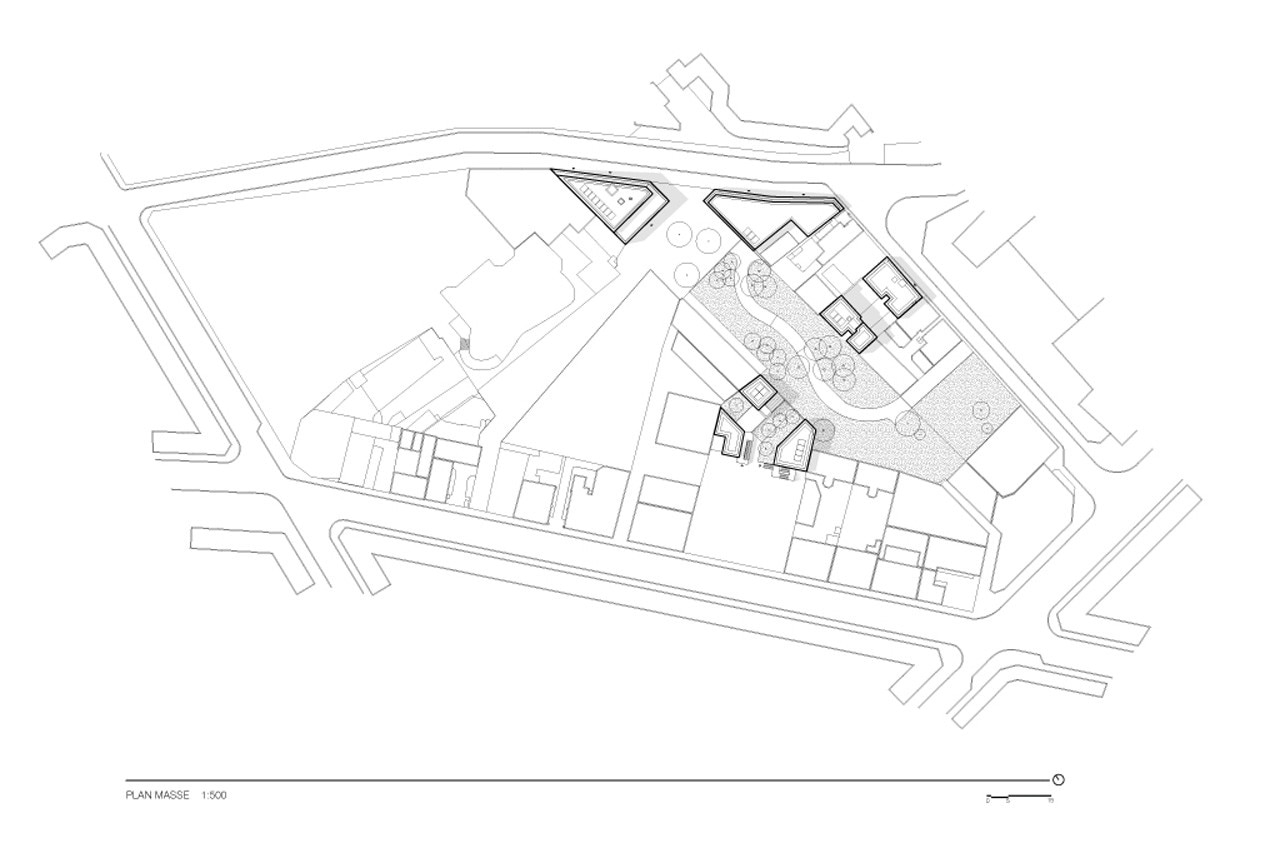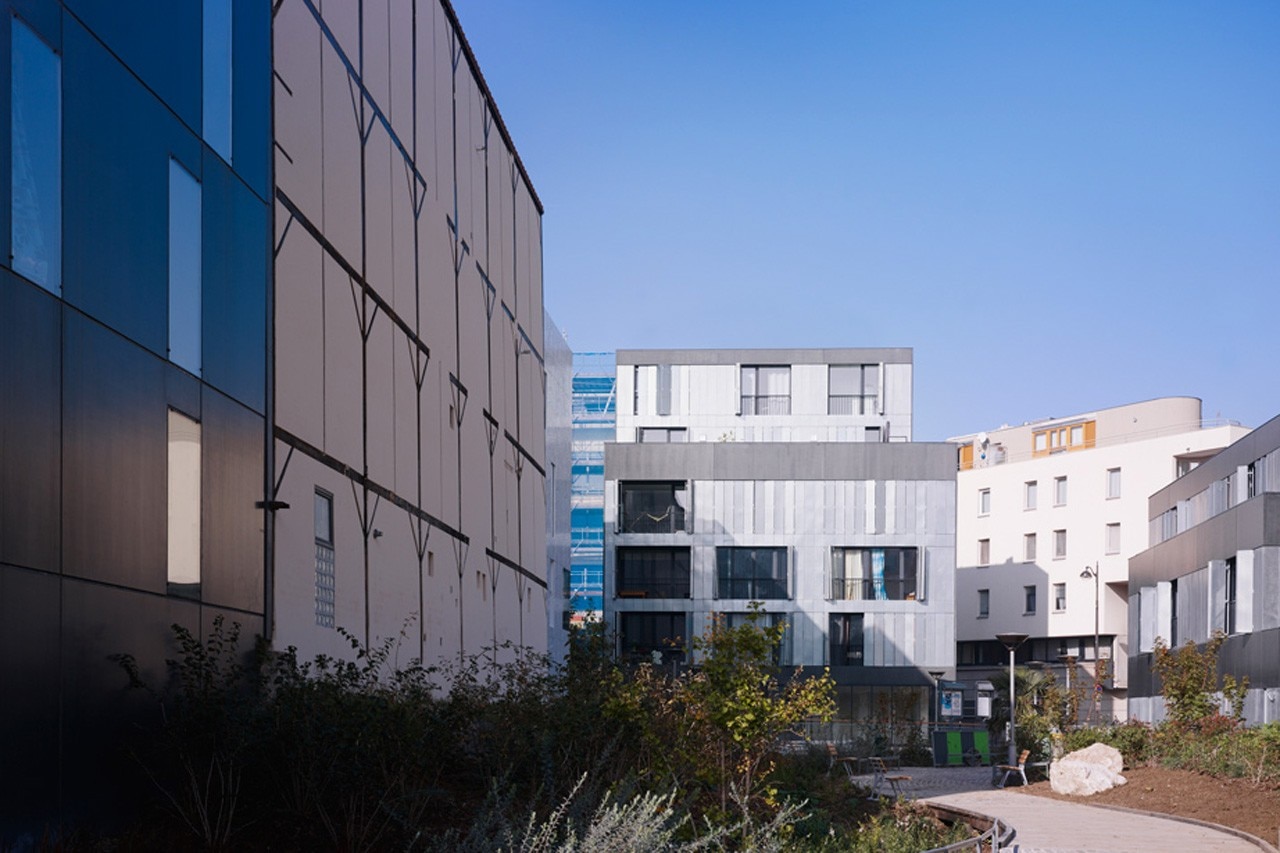
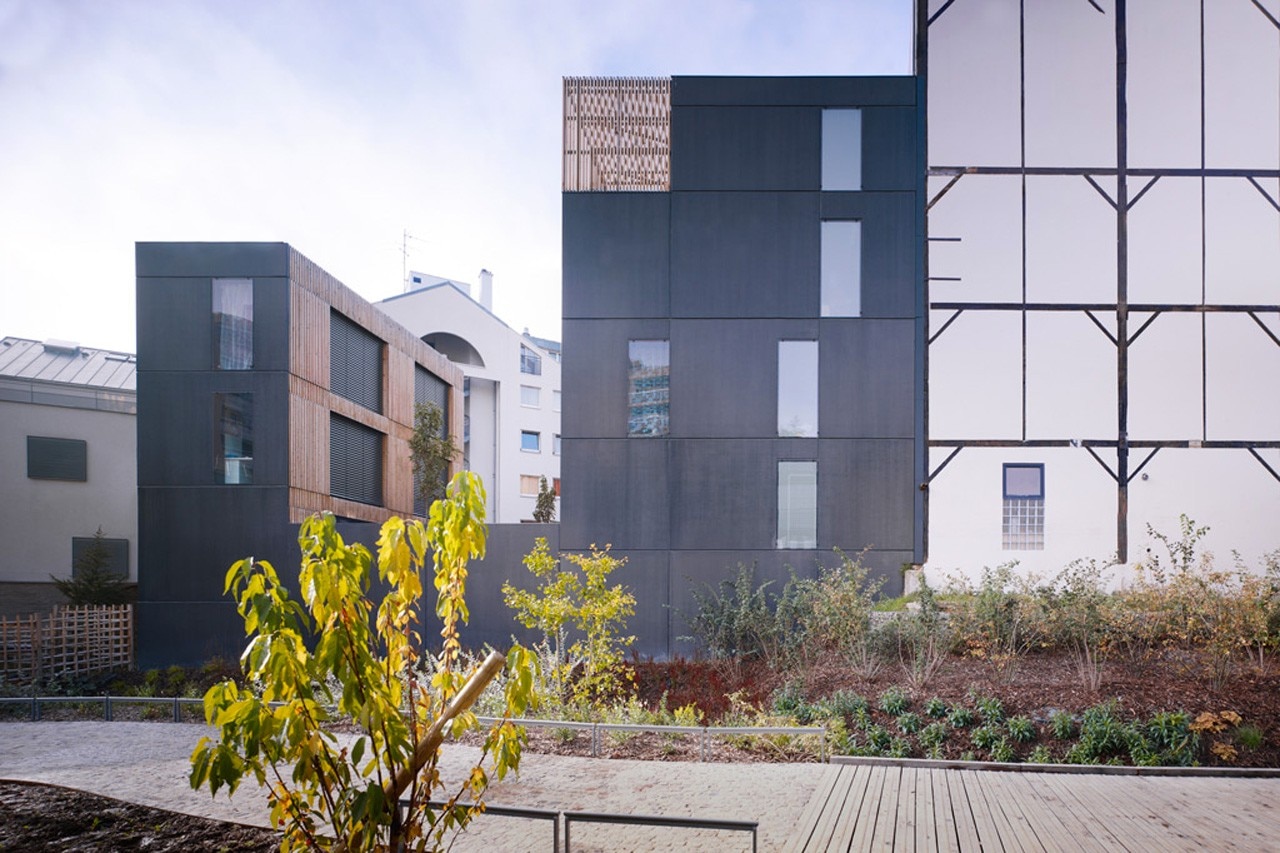
The project to build thirty housing units is separated into four lots across the block. It aims to reconstruct the urban fabric by drawing inspiration from the old structure and type of building.
Although the four lots of the project belong to the same program (public housing with community activities or a child services center on the ground floor), their role in the urban development of the area differs according to their location: while lot 6A, which leans against a five-story existing wall, and lot 6B demarcate the edge of rue de Fontarabie and close off the small square, lot 6C echoes the existing constructions in its scale and balance between fullness and empty space. Particular attention was paid to the shared spaces, which include the hallways, courtyards, and stairwells, especially to their size, lighting, and materials, all in order to transform them into places of life, in the manner of the Faubourg style of architecture that characterizes the eastern parts of Paris. Thus, lot 6B has a stairwell that is naturally lit by a large picture window, which in turn renders the stairwell visible from the street.
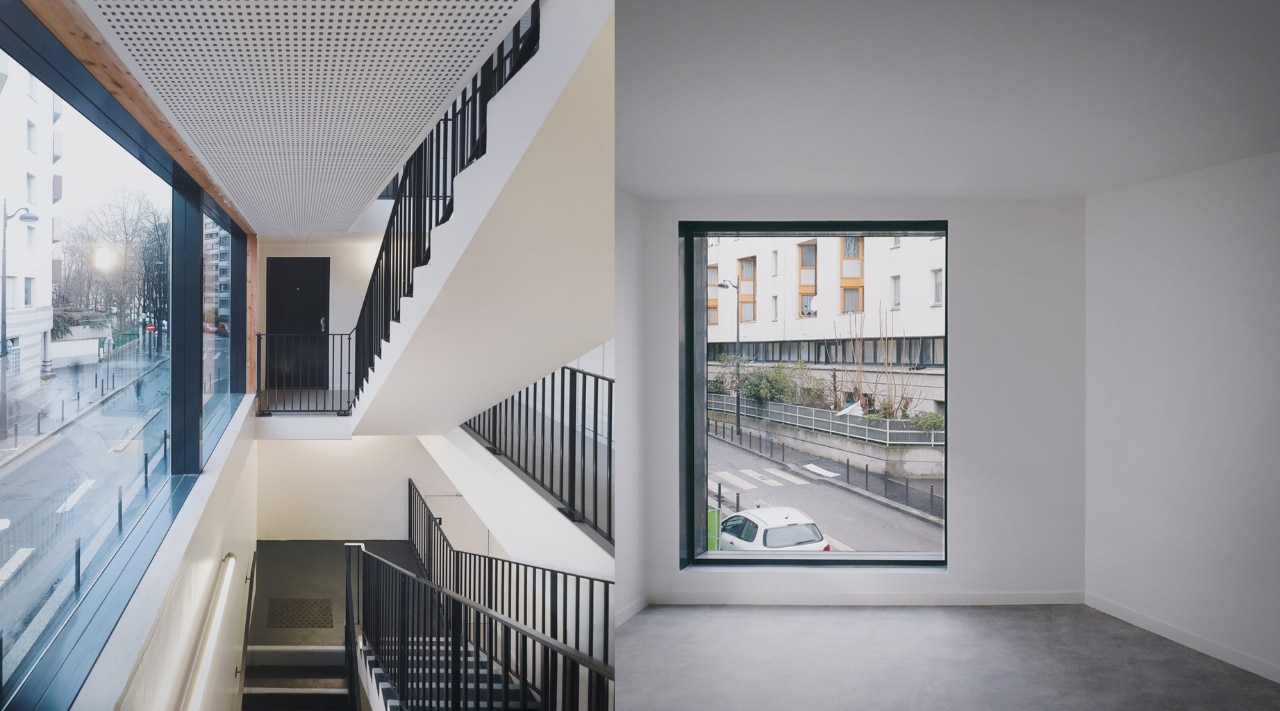
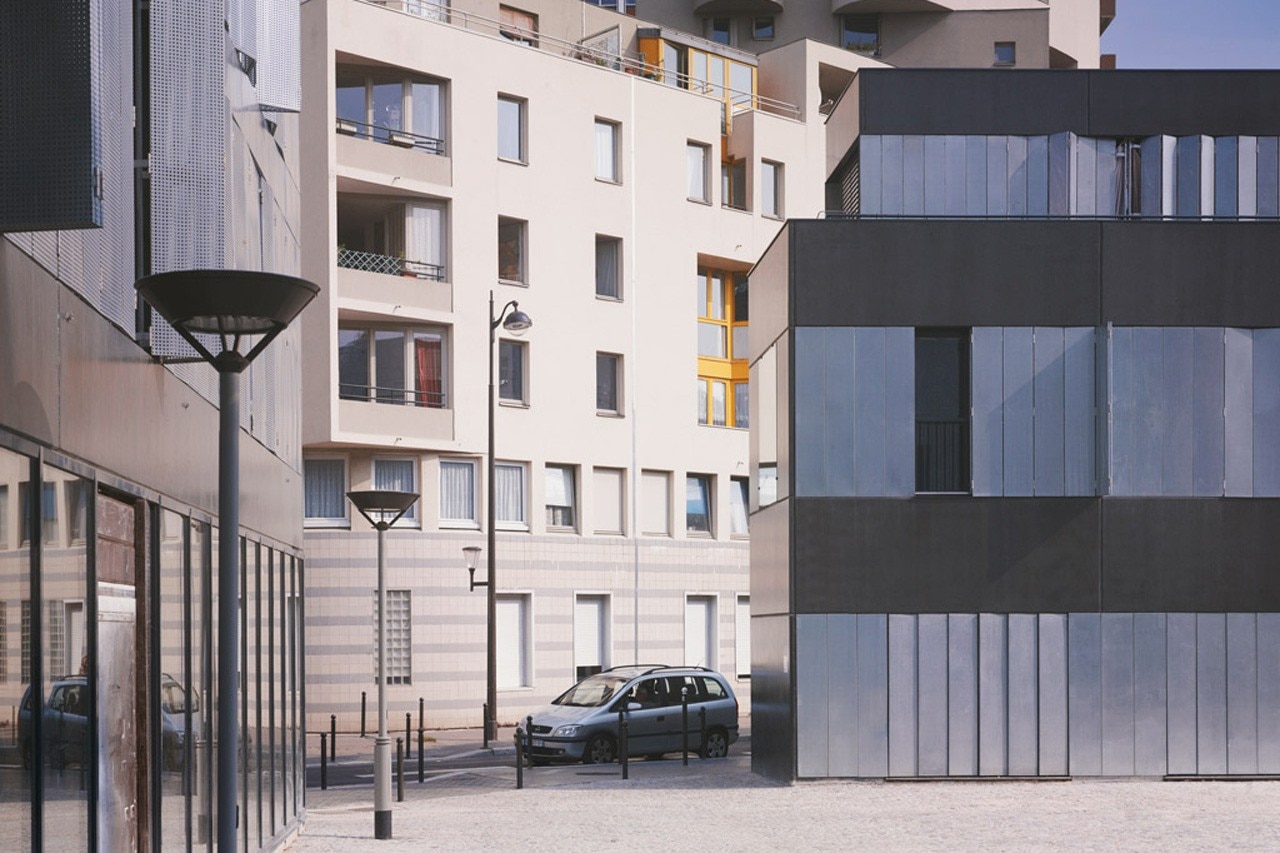
The design of the façades limits energy loss. The northern facades, pierced by small openings that illuminate the bedrooms, are rather closed, while the south-facing facades look mostly out onto the garden and thereby provide an almost panoptic view. Balconies extend the apartments’ living rooms. Metal shutters allow for the filtering of natural light. Solar panels on the roof provide energy to the building.
The four lots are certified according to French sustainable construction standards (BBC 2005, option Effinergie et Cerqual H&E, Profil A).
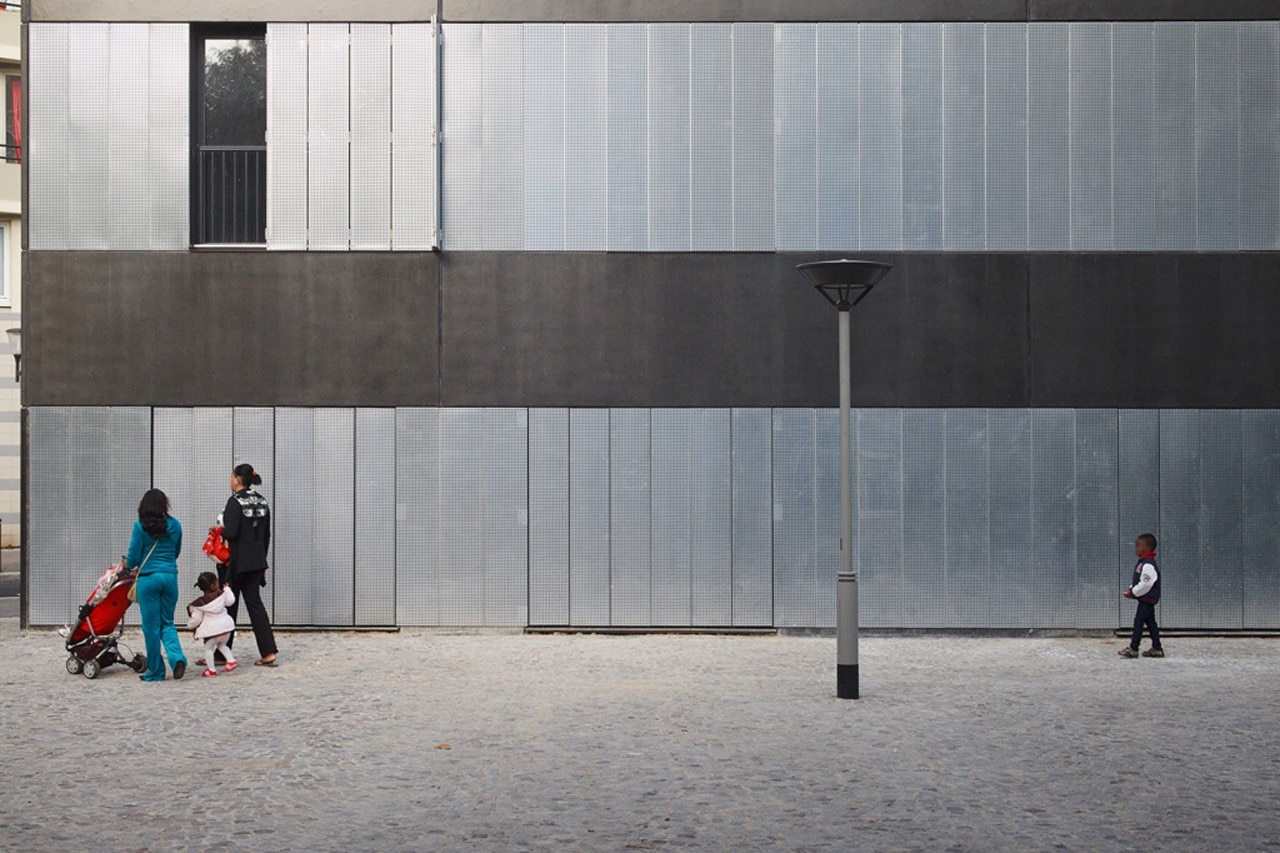
30 public housing units, 20th arrondissement, Paris
Program: thirty public housing units, an activity center, a child services center, separated into four lots
Contracting Authority: Paris Habitat OPH
Architect: LAN Architecture
Project Manager: LGX Ingénierie
HEQ Consultant: Agence Franck Boutté
Budget: € 5.9M before taxes
Net usable area: 2,242.5 sqm
Completion: 2014


